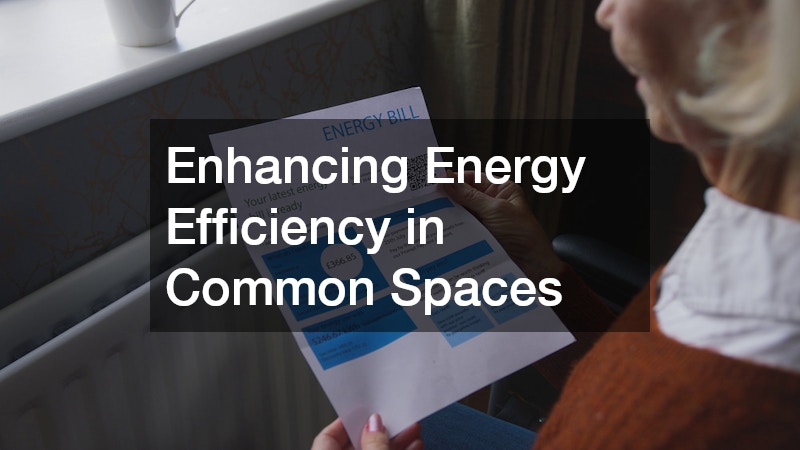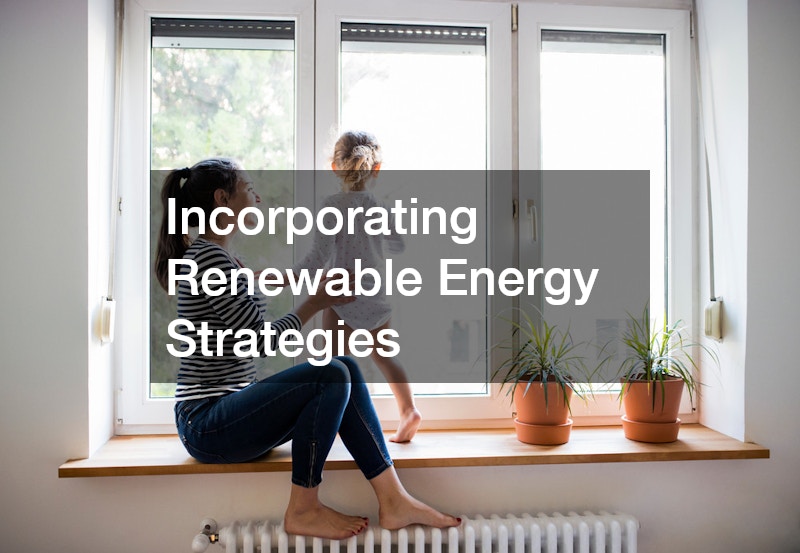As concerns about climate change, energy consumption, and environmental preservation continue to grow, homeowners are increasingly seeking ways to make their living spaces more sustainable. A sustainable home is not just about reducing energy bills; it is about creating a healthier, more efficient, and environmentally conscious living environment that can endure over time. The choices we make in construction, renovation, and daily maintenance can significantly affect our ecological footprint, and embracing sustainable practices allows homeowners to contribute to a greener future while also enjoying long-term cost savings and enhanced comfort.
Moreover, sustainability is no longer a niche trend. Modern homeowners are discovering that investing in green solutions can improve property value, enhance indoor air quality, and provide a more comfortable living experience year-round. With the holidays and seasonal changes approaching, now is the perfect time to explore upgrades that prioritize efficiency, durability, and environmental responsibility. This guide will outline practical and creative improvement ideas for making your home more sustainable, covering everything from interior finishes to structural upgrades.
1. Enhancing Energy Efficiency in Common Spaces

One of the most effective ways to make a home more sustainable is by improving energy efficiency. Homeowners can start by evaluating their current energy consumption patterns and identifying areas where energy is being wasted. Small changes, such as switching to energy-efficient lighting or upgrading insulation, can significantly reduce monthly utility bills while also lowering the home’s carbon footprint. Additionally, integrating smart home technology can help monitor energy usage, automate heating and cooling, and reduce unnecessary electricity consumption.
Selecting the right surfaces and materials also contributes to sustainability. For instance, choosing a durable and eco-friendly kitchen countertop made from recycled or sustainably sourced materials can minimize environmental impact while providing long-lasting functionality. A kitchen countertop that requires minimal maintenance and resists wear and tear reduces the need for frequent replacements, which is both economical and environmentally responsible. By combining thoughtful material selection with energy-conscious practices, homeowners can transform their living spaces into more sustainable, comfortable environments that meet modern efficiency standards.
2. Elevating Comfort with Sustainable Textiles
Sustainable home improvements aren’t limited to large appliances or structural changes. Textiles and furnishings also play a significant role in promoting a greener lifestyle. Opting for custom rugs made from natural fibers or recycled materials not only adds beauty and comfort to a home but also supports environmental responsibility. Unlike mass-produced rugs made with synthetic materials, eco-friendly options tend to have a smaller carbon footprint and can often be composted or recycled at the end of their life cycle.
Incorporating these textiles throughout the home—whether in living areas, bedrooms, or workspaces—helps to create a cohesive, environmentally conscious design. Beyond aesthetics, natural fiber rugs can improve indoor air quality by avoiding the volatile organic compounds (VOCs) often found in synthetic materials. Additionally, investing in high-quality, custom rugs ensures durability, reducing the need for frequent replacements and lowering waste over time. By integrating sustainable textiles into the home, homeowners can enjoy both comfort and peace of mind knowing their design choices support a greener future.
3. Flooring Choices That Make a Difference
The flooring in a home significantly impacts both its aesthetic and environmental footprint. Vinyl plank flooring services offer an opportunity to upgrade your floors while considering sustainability. Many modern vinyl options are now manufactured with recycled materials, low VOC emissions, and longer lifespans, making them an excellent alternative to traditional flooring choices that may require frequent replacement.
When planning a flooring upgrade, it’s important to consider durability, ease of maintenance, and environmental certifications. High-quality vinyl plank flooring reduces waste by lasting longer and resisting moisture or wear, which decreases the likelihood of early replacement. Furthermore, selecting flooring with eco-friendly adhesives and finishes helps maintain indoor air quality and reduces the introduction of harmful chemicals into the home. By choosing sustainable flooring options, homeowners can create spaces that are both visually appealing and environmentally responsible, aligning style and functionality with long-term sustainability goals.
4. Protecting Your Home with Eco-Conscious Roofing

Roofing contractors can play a vital role in making a home more sustainable. The roof is one of the most exposed and energy-impacting parts of a house, affecting everything from insulation to water management. Selecting eco-conscious roofing materials—such as recycled shingles or reflective coatings—can help reduce energy costs and prevent heat absorption, contributing to a more energy-efficient home.
Regular maintenance and inspections provided by reputable roofing contractors ensure the roof remains in top condition, preventing leaks and minimizing energy loss. Additionally, proper insulation beneath the roof works in tandem with sustainable roofing materials to maintain consistent indoor temperatures. By investing in durable, environmentally friendly roofing solutions, homeowners can protect their property while also reducing their overall carbon footprint. This approach demonstrates that even large structural elements can be upgraded thoughtfully to benefit both the home and the planet.
5. Efficient Water Management Solutions
Water conservation is a crucial aspect of a sustainable home. Partnering with a plumbing company can help implement efficient fixtures, repair leaks, and install systems that reduce water usage throughout the house. Low-flow toilets, faucets, and showerheads are simple yet effective ways to conserve water without sacrificing comfort.
Drain services also contribute to sustainability by ensuring that wastewater is managed effectively and preventing issues such as blockages or water damage, which can lead to costly and environmentally harmful repairs. Regular maintenance and inspections of drains help preserve water quality, prevent leaks, and extend the life of the plumbing system. By addressing both water conservation and proper drainage, homeowners can create a home that is resilient, efficient, and environmentally responsible. Thoughtful plumbing upgrades reduce both utility costs and water waste, making a tangible impact on sustainability efforts.
6. Maximizing Natural Light and Airflow
In addition to structural and mechanical improvements, homeowners can enhance sustainability by focusing on natural light and ventilation. Strategically placing windows, doors, and skylights allows sunlight to illuminate spaces during the day, reducing reliance on artificial lighting. Proper airflow and cross-ventilation improve indoor air quality while minimizing the need for energy-intensive heating and cooling.
Thoughtful landscaping can complement these efforts, using shade trees and strategically placed plants to naturally cool a home. Interior design choices, such as light-colored walls and reflective surfaces, can further amplify natural light. By prioritizing daylight and airflow in home design, residents can enjoy a healthier, brighter living space that consumes less energy, aligns with sustainable living principles, and creates a more comfortable and inviting atmosphere.
7. Streamlining Electrical Systems

Electrical contractors are essential partners in creating an energy-efficient home. Upgrading outdated wiring, installing programmable lighting systems, and integrating energy-efficient appliances can drastically reduce electricity consumption. Smart systems allow homeowners to monitor usage in real-time, identify inefficiencies, and automate energy-saving measures such as turning off lights in unoccupied rooms or optimizing heating and cooling schedules.
Moreover, energy-efficient lighting, outlets, and wiring materials not only decrease utility costs but also reduce the environmental impact associated with excessive energy generation. By working with professional electrical contractors, homeowners ensure their electrical systems meet modern efficiency standards and contribute to a more sustainable lifestyle. These upgrades offer both environmental benefits and long-term financial savings while making the home safer and more comfortable.
8. Optimizing Heating and Cooling
HVAC contractors play a critical role in making homes sustainable through efficient heating and cooling solutions. Upgrading to energy-efficient HVAC systems, maintaining equipment regularly, and implementing programmable thermostats can significantly reduce energy consumption while enhancing indoor comfort. High-efficiency systems consume less electricity and require fewer repairs, which decreases waste and improves overall sustainability.
Additionally, HVAC contractors can provide guidance on ventilation strategies that improve air quality while minimizing energy use. Sealing ducts, insulating key areas, and integrating zoned heating or cooling systems ensure that energy is used efficiently throughout the home. By optimizing heating and cooling, homeowners can maintain a comfortable environment while reducing their environmental footprint and utility costs.
9. Strengthening the Building Envelope
Doors and windows are essential components of a home’s building envelope, affecting energy efficiency, security, and comfort. Modern, energy-efficient doors and windows help reduce heat loss during the winter and minimize heat gain in the summer, decreasing reliance on heating and cooling systems. Properly sealed and insulated units also prevent drafts and moisture intrusion, which can protect the structural integrity of the home.
Upgrading doors and windows improves sustainability by reducing energy consumption, enhancing comfort, and providing long-lasting performance. High-quality materials and professional installation ensure durability and efficiency, contributing to a home that is both environmentally responsible and more comfortable for its occupants. Energy-efficient doors and windows demonstrate how small yet impactful investments in building components can make a measurable difference in a home’s overall sustainability profile.
10. Incorporating Renewable Energy Strategies

Beyond structural and efficiency upgrades, homeowners can increase sustainability by integrating renewable energy sources. Solar panels, wind turbines, and geothermal systems provide clean energy that reduces dependence on fossil fuels. Even smaller initiatives, such as solar water heaters or solar-powered outdoor lighting, contribute to lowering a household’s carbon footprint.
Combining renewable energy with energy storage solutions, such as batteries, allows homeowners to manage electricity usage more effectively and rely less on the grid during peak times. These strategies not only promote environmental responsibility but also provide long-term financial benefits, including reduced utility bills and potential tax incentives. Incorporating renewable energy is an essential step for homeowners seeking a forward-thinking, sustainable home that aligns with modern environmental standards.
11. Enhancing Exterior Protection
Siding installers play a pivotal role in ensuring a home is both attractive and sustainable. Modern siding materials are designed to provide insulation, resist weather damage, and require minimal maintenance. High-quality siding can improve energy efficiency by reducing heat transfer and protecting the home from moisture, which can lead to structural deterioration over time.
By choosing durable, low-maintenance materials, homeowners reduce the need for frequent repairs and replacements, minimizing waste and long-term costs. Professional installation ensures that siding performs as intended, creating a weather-resistant, energy-efficient exterior. Upgrading siding is not only a cosmetic improvement but also a sustainable investment that contributes to the overall efficiency, longevity, and environmental responsibility of a home.
12. Integrating Smart and Sustainable Design Throughout
Finally, sustainability in the home is maximized by incorporating smart and thoughtful design across all areas. From selecting energy-efficient materials like kitchen countertop options and durable furnishings to optimizing layout for natural light, airflow, and energy conservation, every decision contributes to a greener living environment. A kitchen countertop made from sustainable materials reduces the need for frequent replacements, while careful spatial planning minimizes energy usage for lighting, heating, and cooling.
Integrating eco-conscious elements into every aspect of design—from flooring and textiles to plumbing, electrical, and HVAC systems—ensures that the home functions efficiently and responsibly. Collaborating with professionals in each field helps homeowners make informed choices that balance aesthetics, comfort, and sustainability. By viewing the home holistically and prioritizing smart, eco-friendly design, families can enjoy a space that supports both their lifestyle and environmental values. Each sustainable choice adds up, creating a home that is not only beautiful and functional but also a model of environmental stewardship for years to come.
Creating a sustainable home involves thoughtful planning, informed decision-making, and strategic upgrades that improve energy efficiency, water management, and material longevity. By focusing on sustainable practices throughout the home—from the selection of kitchen countertops to energy-efficient doors, windows, and HVAC systems—homeowners can reduce their environmental impact while enhancing comfort, aesthetics, and long-term savings. Every improvement, whether small or large, contributes to a more responsible, eco-conscious living environment that benefits both residents and the planet.
By embracing a mindset of environmental stewardship and integrating smart, green solutions across all aspects of the home, homeowners can create spaces that are functional, comfortable, and aligned with long-term sustainability goals. Each upgrade represents a step toward a greener lifestyle, demonstrating that thoughtful design, efficient systems, and durable materials can coexist harmoniously while minimizing environmental impact and promoting energy savings. In doing so, families enjoy the rewards of a home that is not only a refuge but also a testament to their commitment to a more sustainable, responsible, and forward-thinking way of living.








